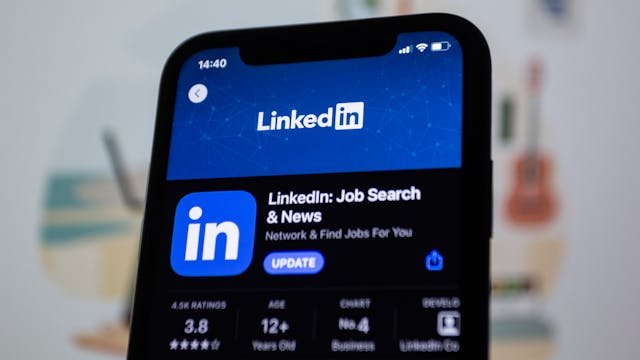Social media advertising is a powerful tool for businesses of all sizes. Whether you’re a startup looking to make a splash or an established company aiming to reach new heights, creative and strategic social media ads can significantly boost your brand’s visibility and engagement. Let’s dive into some high-impact social media ad ideas that will help you capture attention and drive results.
Understanding Your Audience
Before crafting your social media ads, it’s crucial to understand your audience. Knowing who your target audience is will guide your ad creation process, ensuring your messages resonate with the right people. Here’s how to get started:
Demographic Insights
Start by gathering demographic data about your audience. This includes age, gender, location, and occupation. Platforms like Facebook and Instagram offer detailed analytics to help you understand who is engaging with your content. By analyzing these demographics, you can tailor your ad content to appeal to specific groups, increasing the likelihood of engagement and conversions.
Psychographic Profiles
Beyond demographics, delve into psychographics. Understand your audience’s interests, hobbies, and values. What do they care about? What motivates them? This deeper understanding will help you create ads that connect on a more personal level.
Use surveys, feedback forms, and social listening tools to gather psychographic data. For example, if you know that your audience values sustainability, you can highlight the eco-friendly aspects of your product in your ads.
Behavioral Analysis
Analyze your audience’s behavior online. What kind of content do they interact with? When are they most active? Use this information to tailor your ads to fit their online habits and preferences.
Tools like Google Analytics and social media insights can provide valuable data on user behavior. For instance, if your audience is most active in the evenings, schedule your ads to appear during those peak hours for maximum visibility.
Segmenting Your Audience

Audience segmentation is a powerful strategy to ensure your ads are relevant to different groups within your larger audience. By segmenting your audience, you can create personalized ad campaigns that speak directly to the needs and interests of each segment.
Creating Buyer Personas
Develop detailed buyer personas for each segment of your audience. A buyer persona is a semi-fictional representation of your ideal customer based on research and real data. Include information such as age, gender, job title, interests, and pain points. These personas will help you visualize your audience and create more targeted and effective ads.
Tailoring Ad Content
Once you have your buyer personas, tailor your ad content to each segment. For example, if one segment consists of young professionals interested in career advancement, create ads that highlight how your product can help them achieve their goals. For a segment of parents, focus on how your product can make their lives easier or benefit their children.
Leveraging Data and Analytics
Data and analytics are crucial for understanding your audience and measuring the effectiveness of your ad campaigns. Use data-driven insights to refine your targeting and improve your ad performance.
Tracking Key Metrics
Identify key performance indicators (KPIs) that align with your business goals. Common KPIs for social media ads include click-through rates (CTR), conversion rates, and cost per acquisition (CPA). Regularly monitor these metrics to assess the effectiveness of your ads and make data-driven decisions.
A/B Testing
Conduct A/B testing to compare different versions of your ads. Test various elements such as headlines, images, and CTAs to see which ones perform best. Use the insights gained from A/B testing to optimize your ad campaigns continually.
Audience Insights Tools
Utilize audience insights tools provided by social media platforms. Facebook Audience Insights, for example, offers in-depth data about your audience’s demographics, interests, and behaviors. This information can help you refine your targeting and create more relevant ads.
Building Relationships with Your Audience
Building strong relationships with your audience can enhance the effectiveness of your social media ads. Engaged and loyal customers are more likely to respond positively to your ads and convert into paying customers.
Engaging Content
Create content that encourages interaction and engagement. Ask questions, run polls, and invite users to share their opinions. Engaging content can help you build a community around your brand and foster a deeper connection with your audience.
Responding to Feedback
Listen to your audience’s feedback and respond promptly. Whether it’s positive or negative, showing that you value your audience’s input can build trust and loyalty. Use feedback to improve your products, services, and ad campaigns.
Community Building
Encourage your audience to become advocates for your brand. Create opportunities for them to share their experiences and connect with other customers. User-generated content, such as testimonials and reviews, can be powerful tools for building community and trust.
Understanding your audience is a continuous process that requires ongoing effort and adaptation. By staying attuned to your audience’s needs and preferences, you can create high-impact social media ads that resonate and drive results.
Creating Engaging Visual Content
Visual content is at the heart of social media advertising. High-quality images and videos are more likely to capture attention and engage users. Here’s how to create visual content that stands out:
Eye-Catching Images
Invest in high-resolution images that are relevant to your brand and message. Use vibrant colors and unique compositions to draw attention. Tools like Canva can help you design professional-looking graphics even if you’re not a designer. To make your images more engaging, consider the following strategies:
Strategic Use of Colors: Colors can evoke emotions and influence perceptions. Use color psychology to choose colors that align with your brand and resonate with your audience. For instance, blue can convey trust and professionalism, while red can create a sense of urgency.
Incorporate Your Brand Elements: Ensure that your brand’s visual identity is consistent across all your images. This includes using your brand’s color palette, logo, and typography. Consistency helps build brand recognition and reinforces your brand’s image.
Tell a Story with Images: Use images to tell a story that resonates with your audience. Instead of just showcasing your product, show it in use or highlight the benefits it provides. This approach makes your content more relatable and engaging.
Compelling Videos
Video content tends to perform better than static images. Create short, engaging videos that convey your message quickly. Focus on storytelling and keep your videos under 60 seconds to maintain viewer interest. Here’s how to make your videos more compelling:
Optimize for Silent Viewing: Many users watch videos without sound. Ensure your videos are effective even without audio by using captions, text overlays, and strong visuals. This makes your content accessible to a wider audience.
Hook Your Audience Early: The first few seconds of your video are crucial. Start with a strong hook to capture attention immediately. This could be an intriguing question, a surprising fact, or a visually stunning scene.
Highlight Key Points Visually: Use visuals to emphasize the most important points in your video. This can include product close-ups, before-and-after comparisons, or animated text highlighting key features and benefits.
Infographics
Infographics are a great way to present information in a visually appealing manner. Use infographics to share statistics, tips, or processes related to your industry. Ensure they are easy to read and shareable. Here’s how to create impactful infographics:
Focus on Clarity: Infographics should be easy to understand at a glance. Use clear headings, concise text, and simple icons to convey information. Avoid cluttering your infographic with too much text or overly complex visuals.
Make Data Visually Appealing: Present data in a visually engaging way using charts, graphs, and icons. Use contrasting colors to highlight important information and make it stand out.
Tell a Story with Data: Organize your infographic in a logical flow that tells a story. Start with an introduction, present the main points or data, and conclude with a key takeaway. This narrative structure helps keep viewers engaged.
Leveraging Advanced Visual Techniques
To take your visual content to the next level, consider incorporating advanced techniques that can make your ads even more engaging and effective.
Animated Graphics and GIFs
Animated graphics and GIFs can add a dynamic element to your social media ads. They are eye-catching and can convey information quickly and entertainingly. Here’s how to use them effectively:
Highlight Key Features: Use animations to draw attention to the key features of your product or service. For example, you can animate the steps of how your product works or highlight its unique benefits.
Add Personality: Animated graphics and GIFs can add personality to your brand. Use them to showcase your brand’s fun and playful side, making your ads more relatable and memorable.
Keep it Simple: While animations can be engaging, avoid making them too complex or distracting. Focus on one or two key elements to animate, ensuring that your message remains clear and easy to understand.
Interactive Content
Interactive content encourages user participation and can significantly boost engagement. This includes polls, quizzes, and interactive videos. Here’s how to create interactive content for your social media ads:
Create Engaging Polls: Use polls to ask questions and gather opinions from your audience. This not only increases engagement but also provides valuable insights into your audience’s preferences and opinions.
Design Fun Quizzes: Quizzes can be both entertaining and informative. Create quizzes related to your industry or product that educate your audience while keeping them engaged. Share the results in a way that encourages further interaction.
Develop Interactive Videos: Interactive videos allow viewers to make choices that affect the content they see. This can create a more personalized and engaging experience. Use interactive videos to showcase different product features or tell a story that the viewer can control.
Strategic Planning and Testing
Creating engaging visual content requires strategic planning and continuous testing. Here’s how to ensure your visuals are effective and resonate with your audience:
Content Calendar
Plan your visual content in advance using a content calendar. This helps you stay organized and ensures a consistent posting schedule. A well-planned content calendar also allows you to align your visuals with key events, holidays, and marketing campaigns.
A/B Testing Visuals
Conduct A/B testing to compare different versions of your visual content. Test various elements such as images, colors, and video lengths to see which ones perform best. Use the insights gained from A/B testing to refine your visuals and improve engagement.
Analyzing Performance
Regularly analyze the performance of your visual content using analytics tools. Track metrics such as engagement rates, click-through rates, and conversions. Use this data to understand what works and what doesn’t, and make data-driven decisions to optimize your visuals.
Crafting Effective Ad Copy
Your ad copy is just as important as your visuals. It needs to be clear, concise, and compelling. Here’s how to write ad copy that converts:
Strong Headlines
Your headline is the first thing users will see. Make it catchy and relevant to grab attention immediately. Use action words and address the reader directly to create a sense of urgency. Here’s how to craft strong headlines:
Use Power Words: Power words are persuasive and evoke emotions. Words like “exclusive,” “limited,” “instant,” and “guaranteed” can make your headlines more compelling.
Ask Questions: Headlines that ask questions can pique curiosity. Questions like “Are you ready to transform your business?” or “Want to double your sales?” can draw readers in and make them want to learn more.
Highlight Benefits: Focus on the benefits your product or service offers. For example, “Save Time and Money with Our Innovative Solution” clearly states what the user stands to gain.
Clear Call-to-Action
Include a clear call-to-action (CTA) that tells users what you want them to do next. Whether it’s “Shop Now,” “Learn More,” or “Sign Up,” your CTA should be direct and easy to follow. Here’s how to create effective CTAs:
Be Direct and Specific: Avoid vague CTAs like “Click Here.” Instead, use specific actions like “Download Your Free Guide” or “Start Your Free Trial.”
Create a Sense of Urgency: Encourage immediate action by adding a sense of urgency to your CTA. Phrases like “Limited Time Offer” or “Only a Few Spots Left” can motivate users to act quickly.
Test Different CTAs: Conduct A/B testing to determine which CTAs resonate most with your audience. Test different phrases, placements, and designs to optimize your conversion rates.

Benefit-Focused Messaging
Highlight the benefits of your product or service rather than just listing features. Show your audience how your offering can solve their problems or improve their lives. Here’s how to create benefit-focused messaging:
Identify Pain Points: Understand the challenges your audience faces and address them directly in your ad copy. For example, if you’re selling a project management tool, highlight how it can help users stay organized and meet deadlines.
Use Social Proof: Incorporate testimonials, case studies, and reviews that showcase the benefits others have experienced. Social proof can build trust and credibility, making your ad copy more persuasive.
Highlight Unique Selling Points: Emphasize what sets your product or service apart from the competition. Whether it’s superior quality, faster results, or better customer support, make sure your unique selling points are clear.
Personalizing Your Ad Copy
Personalized ad copy can significantly enhance engagement and conversion rates. Here’s how to tailor your messages to resonate with individual audience segments:
Dynamic Content
Use dynamic content to personalize your ad copy based on user data. For example, you can display different messages to users based on their location, browsing history, or past purchases. Platforms like Facebook and Google Ads offer dynamic content features that allow you to create tailored experiences for each user.
Addressing User Needs
Craft your ad copy to address the specific needs and preferences of different audience segments. For instance, if you’re targeting small business owners, focus on how your product can help them save time and resources. If your audience includes young professionals, highlight how your service can support their career growth.
Leveraging User Data
Leverage user data to create personalized ad experiences. Use insights from customer profiles, purchase history, and engagement patterns to craft messages that resonate. For example, if a user has previously purchased a fitness product, your ad copy can highlight complementary products or new arrivals in the fitness category.
Storytelling in Ad Copy
Storytelling can make your ad copy more engaging and memorable. Here’s how to incorporate storytelling techniques into your social media ads:
Use a Narrative Structure
Create a narrative that resonates with your audience. Start with a relatable problem, introduce your product or service as the solution, and end with a positive outcome. This structure can make your ad copy more compelling and relatable.
Incorporate Real-Life Examples
Use real-life examples and anecdotes to illustrate your points. This can make your ad copy more authentic and relatable. For example, share a success story from a satisfied customer or describe a common scenario that your audience can relate to.
Evoke Emotions
Emotional appeals can make your ad copy more impactful. Whether it’s happiness, excitement, or empathy, evoking emotions can create a stronger connection with your audience. Use descriptive language and vivid imagery to bring your story to life.
Optimizing Ad Copy for Different Platforms
Different social media platforms have unique characteristics and user behaviors. Here’s how to optimize your ad copy for various platforms:
Facebook and Instagram
Keep your ad copy concise and engaging. Use eye-catching visuals to complement your text. Since users often scroll quickly, make sure your main message and CTA are immediately visible. Incorporate emojis to add personality and break up text.
Twitter’s character limit requires brevity. Focus on crafting short, punchy messages that capture attention quickly. Use hashtags strategically to increase visibility and engagement. Include a clear and concise CTA to drive action.
LinkedIn users are typically more professional and business-focused. Tailor your ad copy to reflect this audience. Highlight professional benefits, industry insights, and thought leadership. Use a more formal tone and include statistics or data to back up your claims.
Utilizing User-Generated Content
User-generated content (UGC) is a powerful way to build trust and authenticity. Here’s how to incorporate UGC into your social media ads effectively:
Customer Testimonials
Feature testimonials from satisfied customers. Real-life experiences can be more persuasive than traditional advertising, as they provide social proof of your product’s value. Here’s how to leverage customer testimonials strategically:
Encourage Authenticity: Ask your customers to share their honest experiences and feedback. Authenticity is key to making testimonials believable and relatable. Avoid overly polished or scripted testimonials, as they can come across as inauthentic.
Showcase Diverse Experiences: Highlight testimonials from a variety of customers to show the broad appeal of your product. Feature users from different demographics, industries, and use cases to demonstrate versatility and wide-ranging benefits.
Incorporate Visual Elements: Combine text testimonials with photos or videos of the customers who provided them. Visual elements can make testimonials more engaging and credible. For example, a video testimonial can capture the customer’s enthusiasm and satisfaction more vividly than text alone.
Social Media Mentions
Highlight posts where users have mentioned or tagged your brand. This not only showcases your happy customers but also encourages others to share their experiences with your brand. Here’s how to make the most of social media mentions:
Create a Branded Hashtag: Develop a unique and memorable hashtag for your brand. Encourage customers to use this hashtag when they post about your product. Monitor the hashtag to find and curate user-generated content easily.
Engage with Users: Actively engage with users who mention or tag your brand. Like, comment, and share their posts to show appreciation and build a community. This interaction not only boosts engagement but also fosters loyalty and encourages more UGC.
Feature Mentions in Ads: Use user mentions as content for your social media ads. Highlight positive mentions and tag the original poster (with their permission) to add authenticity. This strategy can help build trust with potential customers by showing real-life endorsements.
Influencer Partnerships
Partner with influencers who align with your brand values. Influencers can create authentic content that resonates with their followers, helping you reach a broader audience. Here’s how to strategically use influencer partnerships:
Choose the Right Influencers: Select influencers whose audience matches your target demographic. Look for influencers who share your brand’s values and have a genuine interest in your product. Micro-influencers, with smaller but highly engaged followings, can be particularly effective.
Collaborate on Content Creation: Work with influencers to create content that highlights your product’s benefits and unique features. Give them creative freedom to ensure the content feels authentic and resonates with their audience. Co-create campaigns that align with both your brand and the influencer’s style.
Track and Measure Performance: Use tracking tools to measure the performance of influencer campaigns. Analyze metrics such as engagement rates, follower growth, and conversions to assess the campaign’s effectiveness. Use these insights to refine future influencer partnerships.
Strategic Integration of UGC in Ad Campaigns

Incorporating user-generated content into your ad campaigns can enhance credibility and engagement. Here’s how to strategically integrate UGC into your social media ads:
Create UGC Campaigns
Launch campaigns specifically designed to generate UGC. Encourage your audience to share their experiences with your product in exchange for a chance to be featured in your ads. Here’s how to run successful UGC campaigns:
Set Clear Guidelines: Provide clear instructions on how users can participate. Specify the type of content you’re looking for (e.g., photos, videos, reviews) and how they should share it (e.g., using a specific hashtag).
Offer Incentives: Motivate participation by offering incentives such as discounts, giveaways, or exclusive access to new products. Ensure the rewards are appealing enough to encourage user involvement.
Highlight User Content: Regularly feature user-generated content on your social media channels. Acknowledge and appreciate your users’ contributions to foster a sense of community and encourage ongoing participation.
Curate and Showcase UGC
Curate the best user-generated content and showcase it in your ads. Highlight how real customers use and benefit from your product. Here’s how to effectively curate and showcase UGC:
Select High-Quality Content: Choose content that is visually appealing and aligns with your brand’s image. Ensure the selected UGC is of high quality to maintain the professionalism of your ads.
Tell a Story: Use UGC to tell a story about your brand. Combine multiple user posts to create a narrative that highlights different aspects of your product. For example, you can showcase a day in the life of various users interacting with your product.
Give Credit: Always give credit to the original creators of the UGC. Tag them in your posts and ads to show appreciation and build goodwill. This recognition can encourage more users to share their content.
Leverage Reviews and Ratings
Incorporate customer reviews and ratings into your social media ads. Positive reviews can act as powerful social proof and influence purchasing decisions. Here’s how to leverage reviews and ratings effectively:
Feature Star Ratings: Display star ratings prominently in your ads. High ratings can instantly communicate trust and quality to potential customers. Highlight reviews with top ratings to maximize impact.
Use Quotes from Reviews: Extract compelling quotes from customer reviews and include them in your ad copy. Choose quotes that highlight specific benefits or unique selling points of your product.
Highlight Review Platforms: Mention the platforms where the reviews are sourced, such as Google, Yelp, or Trustpilot. This adds credibility and allows users to verify the authenticity of the reviews if they choose to.
Conclusion
Harnessing the power of high-impact social media ad ideas can transform your marketing efforts, driving engagement and conversions for your business. Understanding your audience lays the foundation for crafting ads that resonate and captivate. Creating engaging visual content, from eye-catching images to compelling videos, ensures your ads stand out in crowded feeds. Crafting effective ad copy that speaks directly to your audience’s needs and desires maximizes the impact of your visuals.
Utilizing user-generated content adds authenticity and trust to your ads, showcasing real-life experiences and endorsements. By strategically integrating customer testimonials, social media mentions, influencer partnerships, and reviews, you build a sense of community and loyalty around your brand.
Read Next:
- Marketing Strategies for Financial Advisors
- Effective Low-Cost Marketing Ideas for Small Businesses
- Exclusive Marketing Strategies for Luxury Real Estate
- Easter Marketing Strategies to Delight Customers
- Marketing Strategies to Attract Members to Your Health Club






















Comments are closed.